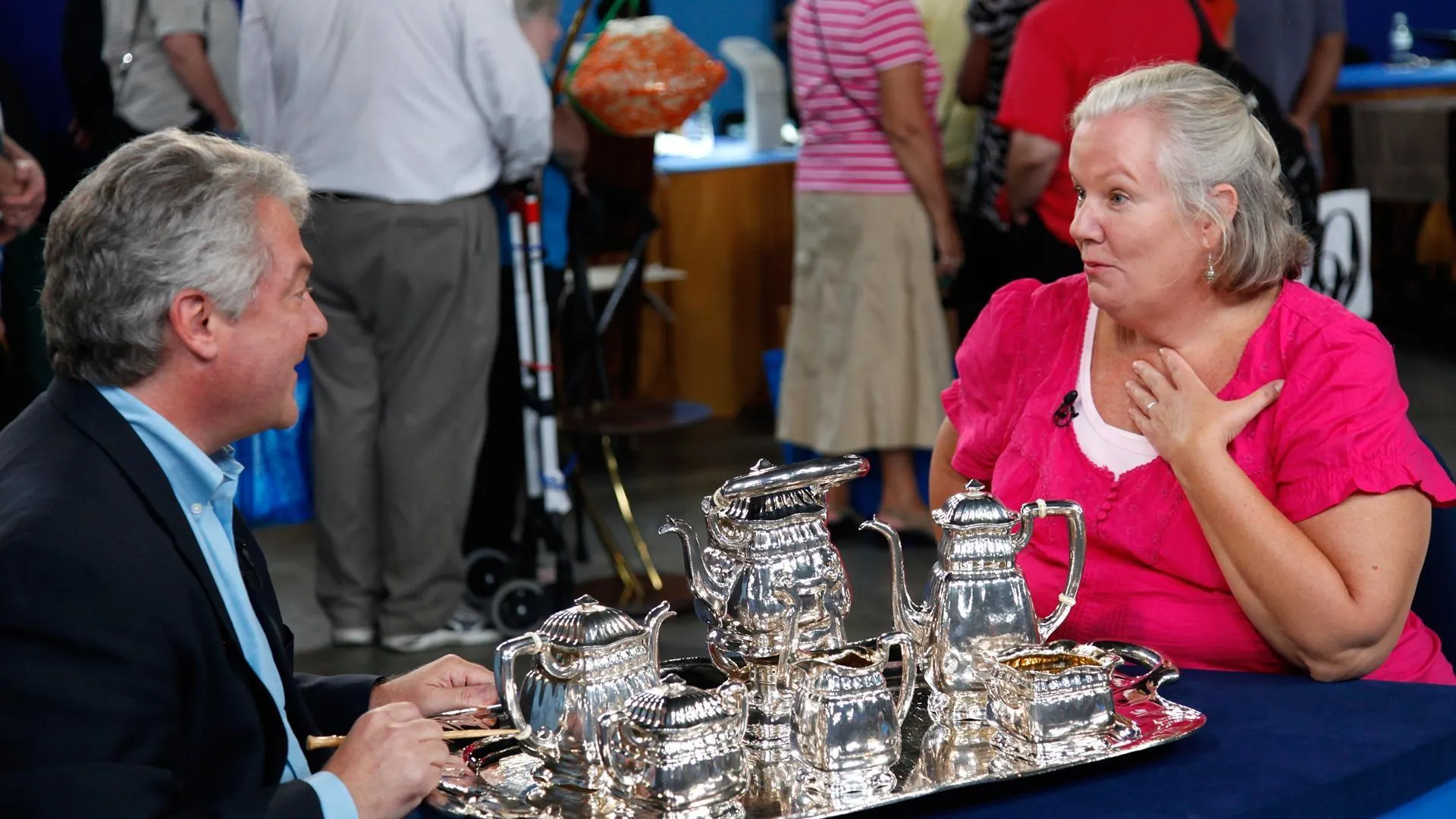GUEST: My great-grandfather was a surgeon in the Civil War. And he retired afterwards to Denver, Colorado. And there is a story that this was either a wedding gift or a gift of thanks for surgery by a Navajo chief. And through a book my sister gave me, I believe it's an Ute chief named Colorow. It says that the two of them used to sit together and share war stories.
APPRAISER: Colorow was indeed a Ute chief. He lived from about 1808 to 1888. Do you know when he purportedly gave this blanket to your relative?
GUEST: No, but it would have been after the Civil War. 1866 is when my grandfather went to Denver.
APPRAISER: Okay, well, what we have here is a Second Phase chief's blanket made by the Navajo. They started making these striped blankets early in the 19th century. The first blankets were just simple stripes, with... usually with indigo, the natural white and the natural dark brown. And they actually did call the First Phase chief's blankets Ute blankets, because they traded a lot of them up to the Utes. They were also traded up to a lot of the Plains tribes during the 1860s and '70s. Now, the Second Phase blankets incorporated this box-and-border design. We think they started making Second Phase blankets in about the 1840s. Your blanket, I believe, dates probably to the 1850s.
GUEST: Oh.
APPRAISER: The dyes are a beautiful indigo and then a natural dark brown and a natural ivory. The reds are a speckled, probably a cochineal, a natural dye made from bugs. And they started doing that early in the 19th century. This blanket looks like it was well used. There's a lot of restoration. And the restoration looks like it was done in the 19th century. Those repairs were done probably before your grandfather got it.
GUEST: Really?
APPRAISER: Yeah.
GUEST: So it came like this to him.
APPRAISER: I think so. I think the white man gave them the term "chief's blankets."
GUEST: Okay.
APPRAISER: And that was mainly because they traded them out to other tribes, and a lot of times, the only person who could afford it, like with the Utes, would have been a chief. They usually traded them for horses, from my understanding. If this was gifted to your relative for surgery, it would have been a really expensive gift, because the Ute chiefs really treasured these blankets. The fact that it belonged to Colorow, who was a Ute chief, that adds some value but not much. These are very desirable blankets, Second Phase chief's blankets. In this condition, without any restoration, I think your blanket could easily sell at auction for $60,000 to $80,000.











